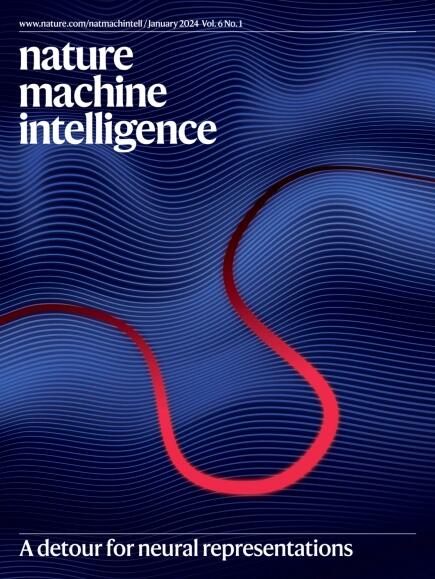基于稀疏去噪模型的高效蛋白质结构生成
IF 23.9
1区 计算机科学
Q1 COMPUTER SCIENCE, ARTIFICIAL INTELLIGENCE
引用次数: 0
摘要
蛋白质在生命的各个领域发挥着不同的作用,作为生物分子在生物技术中被广泛利用,应用范围从基础研究到生物医学。因此,人们对计算设计具有特定性质的蛋白质非常感兴趣。蛋白质结构生成模型提供了一种以可控方式设计蛋白质结构的手段,并已成功地应用于解决各种蛋白质设计任务。这些模型与蛋白质序列和结构预测因子配对,以产生和选择用于实验测试的蛋白质序列。然而,目前的蛋白质结构生成器面临着超过400个氨基酸的蛋白质的重要限制,并且需要对模型训练中看不到的蛋白质设计任务进行再训练。为了解决第一个问题,我们引入了salad,这是一种用于蛋白质结构生成的稀疏全原子去噪模型。我们的模型比目前最先进的模型更小、更快,并且匹配或提高了设计质量,成功地生成了长达1000个氨基酸的蛋白质结构。为了解决第二个问题,我们将沙拉与结构编辑结合起来,结构编辑是一种采样策略,用于将蛋白质去噪模型的能力扩展到看不见的任务。我们将我们的方法应用于各种具有挑战性的蛋白质设计任务,从生成含有功能蛋白质基序的蛋白质支架(基序脚手架)到设计能够在不同条件下采用多种不同折叠的蛋白质(多状态蛋白质设计),展示了色拉和结构编辑的灵活性。提出了一种小而快速的扩散模型,该模型能够有效地生成长蛋白骨架。本文章由计算机程序翻译,如有差异,请以英文原文为准。

Efficient protein structure generation with sparse denoising models
Proteins play diverse roles in all domains of life and are extensively harnessed as biomolecules in biotechnology, with applications spanning from fundamental research to biomedicine. Therefore, there is considerable interest in computationally designing proteins with specified properties. Protein structure generative models provide a means to design protein structures in a controllable manner and have been successfully applied to address various protein design tasks. Such models are paired with protein sequence and structure predictors to produce and select protein sequences for experimental testing. However, current protein structure generators face important limitations for proteins with more than 400 amino acids and require retraining for protein design tasks unseen during model training. To address the first issue, we introduce salad, a family of sparse all-atom denoising models for protein structure generation. Our models are smaller and faster than the state of the art and matching or improving design quality, successfully generating structures for protein lengths up to 1,000 amino acids. To address the second issue, we combine salad with structure editing, a sampling strategy for expanding the capability of protein denoising models to unseen tasks. We apply our approach to a variety of challenging protein design tasks, from generating protein scaffolds containing functional protein motifs (motif scaffolding) to designing proteins capable of adopting multiple distinct folds under different conditions (multi-state protein design), demonstrating the flexibility of salad and structure editing. A small and fast diffusion model is presented, which is able to efficiently generate long protein backbones.
求助全文
通过发布文献求助,成功后即可免费获取论文全文。
去求助
来源期刊

Nature Machine Intelligence
Multiple-
CiteScore
36.90
自引率
2.10%
发文量
127
期刊介绍:
Nature Machine Intelligence is a distinguished publication that presents original research and reviews on various topics in machine learning, robotics, and AI. Our focus extends beyond these fields, exploring their profound impact on other scientific disciplines, as well as societal and industrial aspects. We recognize limitless possibilities wherein machine intelligence can augment human capabilities and knowledge in domains like scientific exploration, healthcare, medical diagnostics, and the creation of safe and sustainable cities, transportation, and agriculture. Simultaneously, we acknowledge the emergence of ethical, social, and legal concerns due to the rapid pace of advancements.
To foster interdisciplinary discussions on these far-reaching implications, Nature Machine Intelligence serves as a platform for dialogue facilitated through Comments, News Features, News & Views articles, and Correspondence. Our goal is to encourage a comprehensive examination of these subjects.
Similar to all Nature-branded journals, Nature Machine Intelligence operates under the guidance of a team of skilled editors. We adhere to a fair and rigorous peer-review process, ensuring high standards of copy-editing and production, swift publication, and editorial independence.
 求助内容:
求助内容: 应助结果提醒方式:
应助结果提醒方式:


